Soapmaking

My idea of a perfect (summer) includes a lot of R & D (research and development) in the lab. Earlier this summer, before humidity got out of hand, I got my act together and created my first batch of soap, ever. It was the exact same formula that Open Source Soap used for creating all my fragrance 3-in-1 soap bars. I decided on an unscented soap for my first batch, because I really wanted to see and experience the soap in its pure form - and also avoid painful loss of precious fragrant materials in case I screw up.
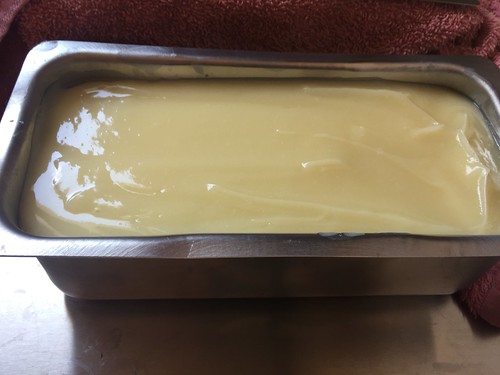
The process is a tad tedious and time consuming, requiring one to be precise with the temperatures and also extra cautious with the lye's caustic properties. It was a rather humid day when I made it, so I realized pretty fast that it is very uncomfortable to work with goggles and gloves when the air is so slippery and moist; and also there is that feeling that the air would cary the caustic fumes far too easily into my system. No harm was done, but I am now convinced that winter is the best time for this kind of production (or R & D, for that matter).

I've used stainless steel loaf pans as molds. I made a mistake of not putting any linings (I didn't want them to have wrinkles at the bottom). Turns out it was near impossible to get the soap out after the 24 hour hardening period. But I managed to do it anyway.
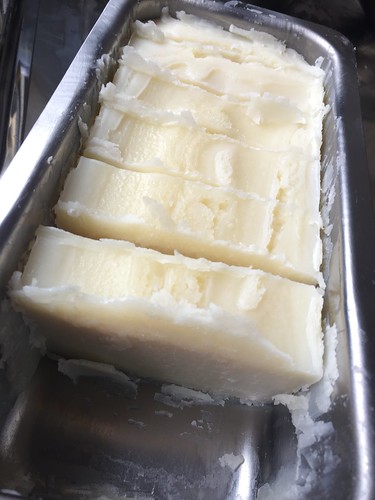
The result I'm very pleased with as far as the soap consistency, properties (lathering, moisturizing) albeit its messy look. I know that if it was possible to take it out of the mold easily they would have been beautiful, so for next time I'm going to use a different procedure for the pouring process and probably use a different mold - probably will reuse 1L milk cartons. The bars will have a different size than they did under Schuyler's hands (he used 2L juice cartons, and than cut them in the middle to create a long shaped rectangle). Mine will be more on the squarish side.
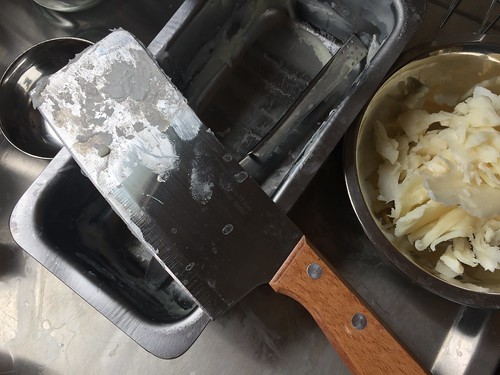
I ended up with a lot of soap shavings, from which I can make a liquid soap or just use for hand washing clothes etc.
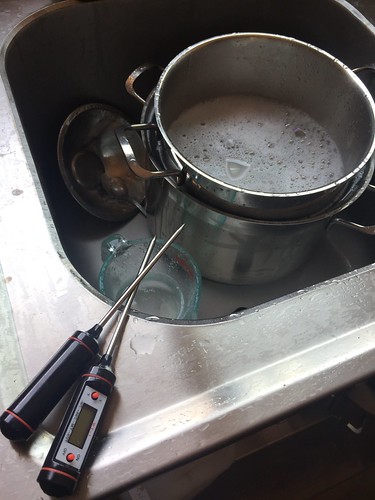
Cleanup time!
(Which is super easy, by the way - especially with my designated sink and stainless steel surfaces - yay!).
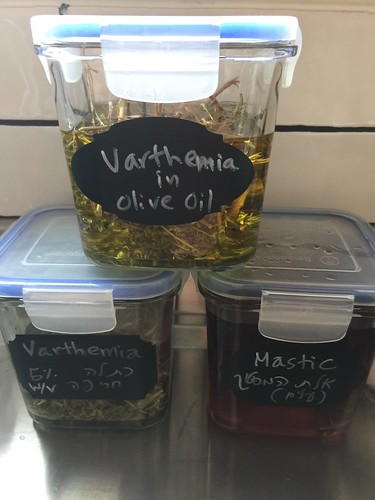
I am now waiting at least for a dry weather to proceed with more experiments. In the meantime, I'm creating oil infusions of herbs that could be incorporated into the soap, from wild herbs that grow here - for example Varthemia and Sage. Having appropriate space makes all the difference - I have room for large- mouthed jars that can sit around for months if needed and still not take up much of my ongoing workspace. It is so refreshing to have a studio built especially for the purpose I need it for. I can't even begin to tell you how thrilled I am about that and all the possibilities of what I can do next.


